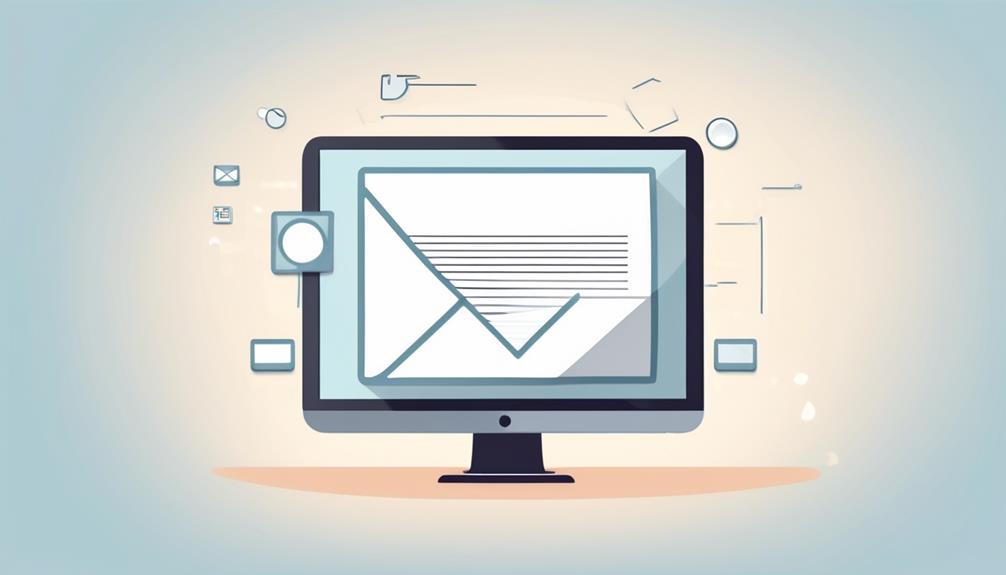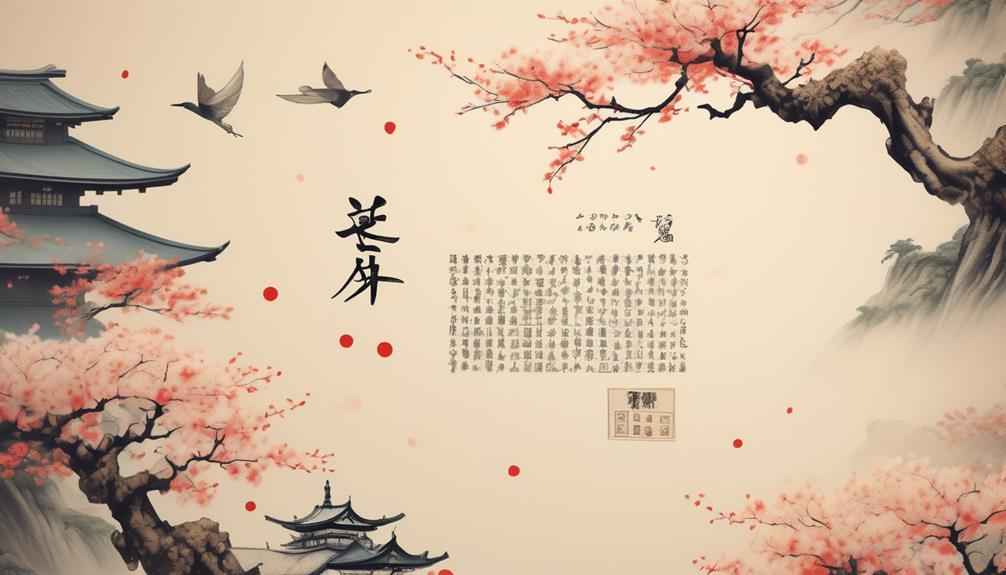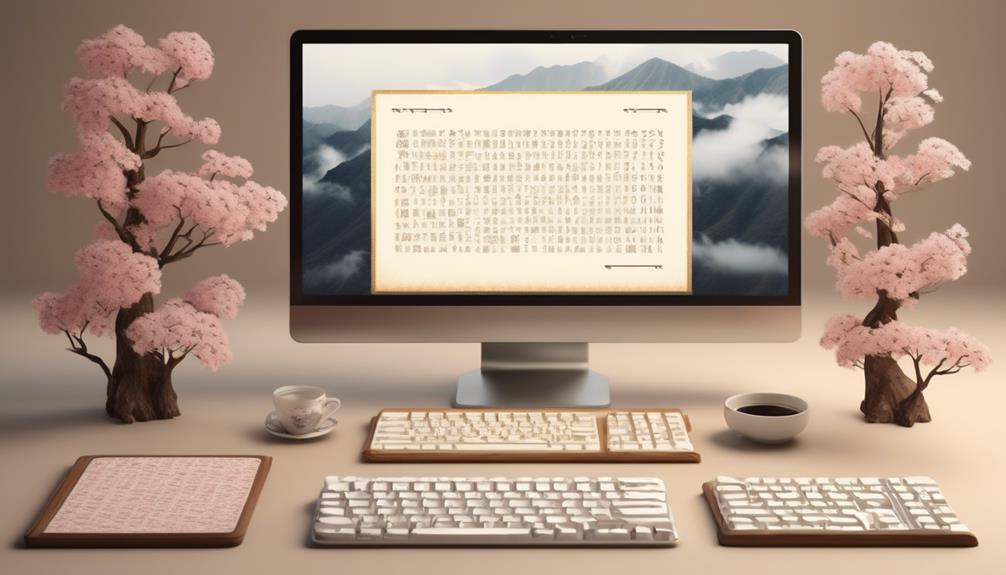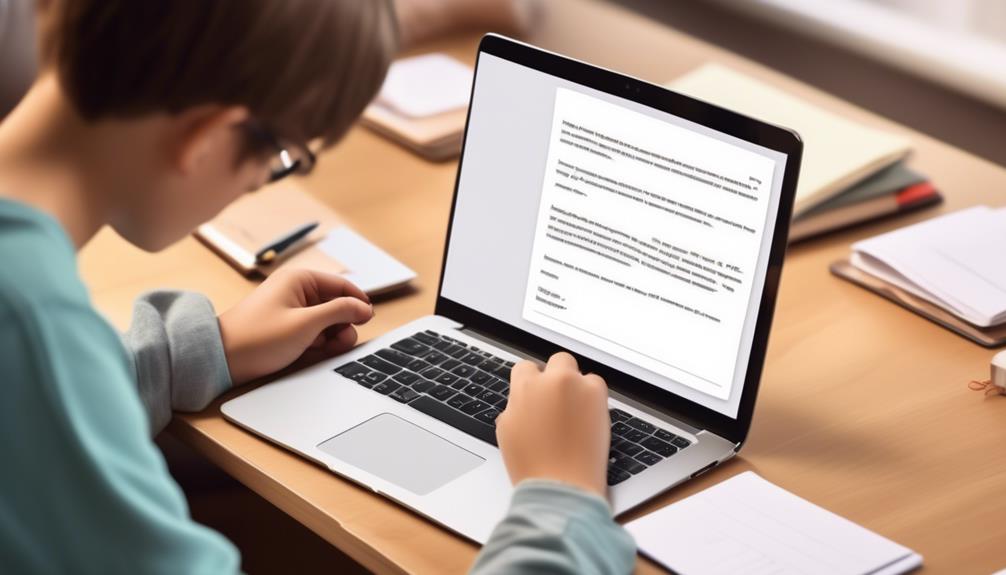In the domain of writing emails in Japanese, it is widely recognized that the importance is found in the minor details. Exploring the intricate landscape of cultural nuances and etiquettes reveals that mastering the ability to compose a fitting Japanese email is indeed a valuable skill.
From the subject line to the closing salutation, each element plays a crucial role in conveying respect and professionalism.
Join us as we unravel the layers of this refined practice, shedding light on the subtle intricacies that can make or break your communication in a Japanese email.
Key Takeaways
- Use concise subject lines and polite language to show respect.
- Address the recipient respectfully using appropriate titles and consider social hierarchy.
- Separate topics into separate emails for clarity and include clear introductions and conclusions.
- Include full contact information in the signature and choose a polite closing phrase.
Proper Japanese Email Format
When crafting a Japanese email, it's essential to adhere to the proper format guidelines for effective communication. Following the Japanese Email Etiquette is crucial to ensure that your message is well-received and understood by the recipient.
Begin your email by summarizing the message with a concise subject line, which helps the recipient grasp the purpose at a glance. Address the recipient respectfully, using appropriate titles like '-san' or '-sama' depending on the level of formality.
Introduce yourself and your organization in a clear and concise manner to provide context for the recipient. When writing the body of the email, ensure that each topic is addressed in a separate email to maintain clarity and organization.
Finally, conclude your email with a polite closing phrase, such as 'yoroshiku onegaishimasu,' to express goodwill and respect.
Subject Line Etiquette

In crafting a Japanese email, the subject line plays a critical role in conveying the message's essence at a glance. Subject lines in Japanese emails hold significant importance and should be carefully considered to ensure effective communication. When composing emails in Japanese, it's essential to follow subject line etiquette to enhance clarity and professionalism. Here are some key points to keep in mind:
- Be concise: Keep the subject line brief and to the point to provide a clear indication of the email's content.
- Use polite language: Incorporate polite language forms in the subject line to show respect and courtesy to the recipient.
- Avoid ambiguity: Ensure the subject line accurately reflects the email's main topic to prevent confusion.
- Include keywords: Incorporate relevant keywords in the subject line to help the recipient quickly grasp the email's subject matter.
Addressing the Recipient

We typically address recipients in Japanese emails by using their last name and title, without incorporating honorific suffixes like -san or -sama. When you write an email in Japanese, remember that addressing the recipient differs from English-speaking cultures. It's essential to be mindful of Japanese etiquette.
If you're addressing multiple recipients, consider using *Company name*の皆さん/様 or '各位' (Dear all) for a general audience. For a more formal tone, '関係者各位' (Dear all involved) can be appropriate.
It's crucial to maintain the appropriate level of formality and respect when addressing different individuals in a Japanese email. Additionally, take into account the social hierarchy and the context of your relationship with the recipient. Addressing the recipient correctly sets the tone for the entire email and shows your understanding and respect for Japanese customs.
Crafting the Email Body

To effectively convey your intentions and maintain proper etiquette in a Japanese email, the crafting of the email body plays a crucial role in showcasing your professionalism and respect for cultural norms. When writing the email body in Japanese, it's essential to use clear and formal language to explain your intentions clearly. Here are some key points to consider when crafting the email body:
- Begin with a polite introduction mentioning your industry of interest and the purpose of your communication.
- Clearly state any attachments included in the email to ensure the recipient is aware of additional documents.
- Use polite speech (Keigo) to conclude the email, expressing best regards or requesting further information.
- Remember to include your full name, company name, position, address, phone number, and email address in the signature before sending the email.
Are the Principles of Professional Email Writing in Chinese Similar to Japanese?
Yes, the principles of writing professional emails in Chinese are similar to Japanese. Both cultures value formality, politeness, and clarity in communication. It is essential to use the appropriate honorifics and expressions of respect in both languages to convey a professional and respectful tone in email correspondence.
Polite Closings and Signatures
Engage recipients with courteous and professional closing remarks and signature details to uphold the etiquette and respect integral to Japanese email communication. When writing an email in Japanese, it's crucial to use polite speech, especially in the closing section. Common phrases like 'どうぞよろしくお願いいたします' (Please take care of me) or 'お手数をおかけしますが、よろしくお願いいたします' (I apologize for the inconvenience, but please take care of me) are appropriate choices that reflect respect and professionalism.
Consider the level of formality required based on your relationship with the recipient. It's essential to choose a closing phrase that aligns with the context of your communication.
In your signature, include your name, position, and contact information for clarity and professionalism. In formal or business emails, adding your company name and address is common practice and contributes to a well-rounded email in line with Japanese culture.
Frequently Asked Questions
How Do You Start an Email in Japanese?
When starting an email in Japanese, we typically use a polite greeting to address the recipient respectfully. It's crucial to consider the appropriate level of formality based on the relationship with the recipient.
A common and polite way to begin is by using phrases like 'こんにちは' (konnichiwa) for a more casual tone or '拝啓' (haikei) for a formal approach. These respectful openings set the tone for the rest of the email.
What Is the Email Format for Japan?
When writing emails in Japan, it's essential to follow a structured format.
Begin with a clear subject line, address the recipient respectfully, introduce yourself and your organization, present your message concisely in the body, and end with a polite closing phrase.
This format helps ensure clarity and professionalism in your communication.
How Do You Address a Japanese SAN Email?
When addressing a Japanese email, we use the honorific title 'san' after the recipient's name. It signifies respect and politeness in Japanese culture. Remembering to include 'san' after the recipient's name is crucial for maintaining a courteous tone in your email communication.
This simple gesture demonstrates your understanding and appreciation of Japanese customs.
How Do Japanese End Emails?
When ending emails in Japanese, it's crucial to maintain a respectful tone. A common practice is to conclude with phrases like 'よろしくお願いいたします' (Yoroshiku onegaishimasu) or 'どうぞよろしくお願いいたします' (Douzo yoroshiku onegaishimasu), which convey politeness and goodwill.
These expressions help to leave a positive impression and show respect towards the recipient. Proper etiquette in email communication is key to building strong relationships and fostering good rapport.
Conclusion
In conclusion, mastering the art of writing a Japanese email requires attention to detail and adherence to proper etiquette. By following the correct format, addressing recipients respectfully, and crafting concise and clear messages, you can effectively communicate in a professional manner.
Remember to use appropriate closing phrases and greetings to leave a positive impression. Embracing these guidelines will ensure your emails are well-received and convey your message effectively.
So, keep calm and email on!










